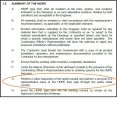⚠ Gather Information Before Design
Message: Pulling a "Smart Pig" through the existing conduit can identify if sliplining is a possibility.
This project sought to rehabilitate a 100 year-old outlet conduit. The existing conduit consisted of a 24” diameter Riveted Steel Pipe conduit with Corrugated Metal Pipe extension installed when the dam was enlarged. The proposed rehab design was to slipline a 20" OD SDR 15.5 HDPE pipe and grout the annular space. Prior to construction, a sample of the HDPE pipe was pulled through the conduit, only to find that it wouldn't fit due to the dimensions of the existing pipe. The design needed to be performed again, with a different solution.
The ultimate solution was to modify the design to utilize a Cured-in-place pipe (CIPP) UV Cured liner instead of grouted HDPE. Due to the location of this dam (high elevation in the mountain plains of Colorado), there was very little time to manufacture the CIPP liner and get it installed before winter weather set in.
Moral of the story: Pulling a test section is cheap insurance, but it must be performed in a timely manner when changes to the design can still be accomplished in the allotted construction timeframe. A better solution would have been to discover this constriction in the pipe during design. Pulling a ‘smart pig’ through the pipe with laser range finder to determine exact dimensions could have prevented this emergency contract modification. This reinforces the concept that the owner gets the most value from their money spent on engineering and information.
Note: The content on this page was originally created as part of DamOutletWorks.org (DOWL, 2018). It has subsequently been updated and reformatted as part of the Dam Safety Toolbox.
Revision ID: 4696
Revision Date: 12/02/2022




